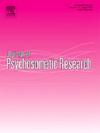Depression as a mediator in the relationship between adverse childhood events, pelvic pain, and pelvic organ prolapse: A cross-sectional study using structural equation modeling
IF 3.3
2区 医学
Q2 PSYCHIATRY
引用次数: 0
Abstract
Background
Adverse childhood events (ACEs) have been linked to chronic pain, yet their relationship with pelvic floor symptoms, including pelvic pain and pelvic organ prolapse (POP), is less understood. This study investigates whether depressive symptoms mediate the association between ACEs and pelvic floor symptoms.
Method
A secondary analysis of a population-based cohort (age ≥ 16 years) was conducted. Participants completed validated questionnaires assessing ACEs, POP symptoms, and depressive symptoms, while pelvic pain was determined by a study-specific questionnaire. Structural equation modeling (SEM) and path analysis were used to assess direct and indirect relationships, stratified by sex.
Results
Complete data were available for 552 males and 780 females. Depression mediated the relationship between ACEs and pelvic pain in both sexes, as well as between ACEs and POP in females. In females, ACEs were associated with pelvic pain (p = 0.020), with depression partially mediating this relationship (p = 0.001, R2 = 0.116, moderate effect). In males, ACEs were not directly associated with pelvic pain (p = 0.196), but a significant indirect effect was observed through depression (p = 0.023), indicating full mediation (R2 = 0.042, small effect). For POP, ACEs had no direct effect (p = 0.722), but depression significantly mediated the relationship (p = 0.001, R2 = 0.161, moderate effect). Findings from SEM and path analysis were comparable.
Conclusion
This study highlights the association between ACEs, pelvic pain and POP in adulthood. Depression emerged as a key mediator in these relationships, with differences observed between males and females.
抑郁症在儿童不良事件、盆腔疼痛和盆腔器官脱垂之间的关系中起中介作用:一项使用结构方程模型的横断面研究
儿童不良事件(ace)与慢性疼痛有关,但它们与盆底症状(包括盆腔疼痛和盆腔器官脱垂(POP))的关系尚不清楚。本研究探讨抑郁症状是否介导ace与盆底症状之间的关联。方法对人群队列(年龄≥16岁)进行二次分析。参与者完成了评估ace、POP症状和抑郁症状的有效问卷,而盆腔疼痛则通过研究特定问卷来确定。结构方程模型(SEM)和通径分析用于评估直接和间接关系,按性别分层。结果男性552例,女性780例,资料完整。抑郁介导了ace与两性盆腔疼痛之间的关系,以及女性ace与POP之间的关系。在女性患者中,ace与盆腔疼痛相关(p = 0.020),抑郁在其中起部分中介作用(p = 0.001, R2 = 0.116,效果中等)。在男性中,ace与盆腔疼痛无直接关系(p = 0.196),但通过抑郁观察到显著的间接影响(p = 0.023),表明完全中介(R2 = 0.042,影响小)。对于POP, ace无直接影响(p = 0.722),但抑郁显著中介关系(p = 0.001, R2 = 0.161,中等影响)。扫描电镜和通径分析的结果具有可比性。结论:本研究强调了ace、骨盆疼痛和成年期POP之间的关系。在这些关系中,抑郁是一个关键的中介,在男性和女性之间观察到差异。
本文章由计算机程序翻译,如有差异,请以英文原文为准。
求助全文
约1分钟内获得全文
求助全文
来源期刊
CiteScore
7.40
自引率
6.40%
发文量
314
审稿时长
6.2 weeks
期刊介绍:
The Journal of Psychosomatic Research is a multidisciplinary research journal covering all aspects of the relationships between psychology and medicine. The scope is broad and ranges from basic human biological and psychological research to evaluations of treatment and services. Papers will normally be concerned with illness or patients rather than studies of healthy populations. Studies concerning special populations, such as the elderly and children and adolescents, are welcome. In addition to peer-reviewed original papers, the journal publishes editorials, reviews, and other papers related to the journal''s aims.

 求助内容:
求助内容: 应助结果提醒方式:
应助结果提醒方式:


